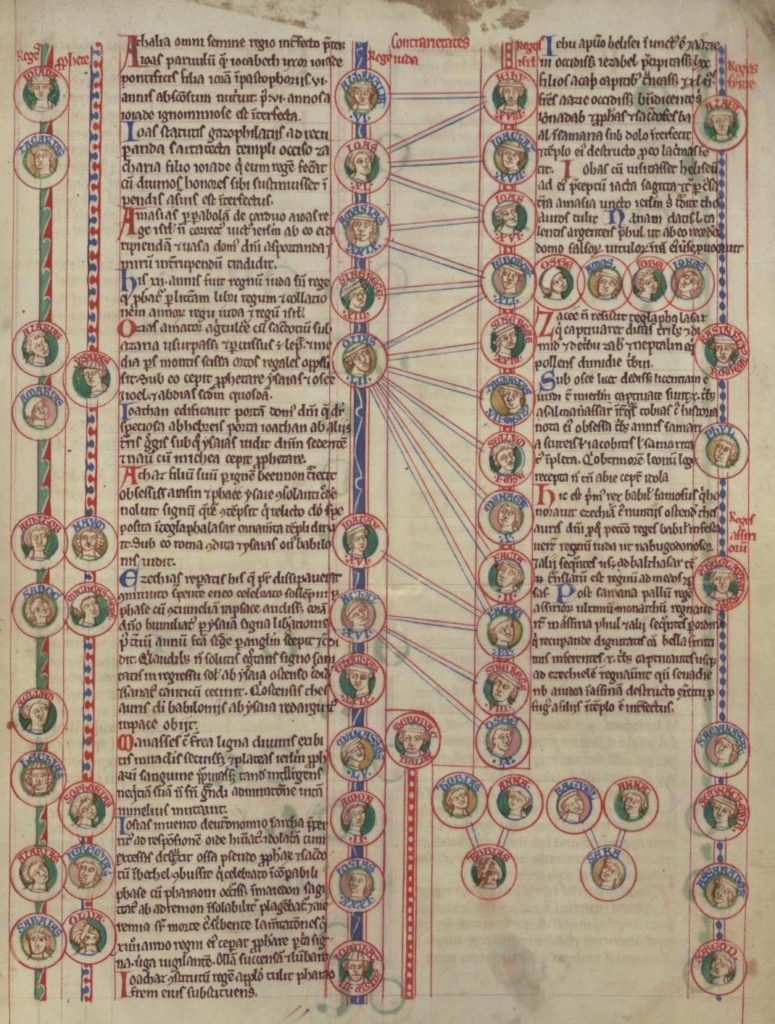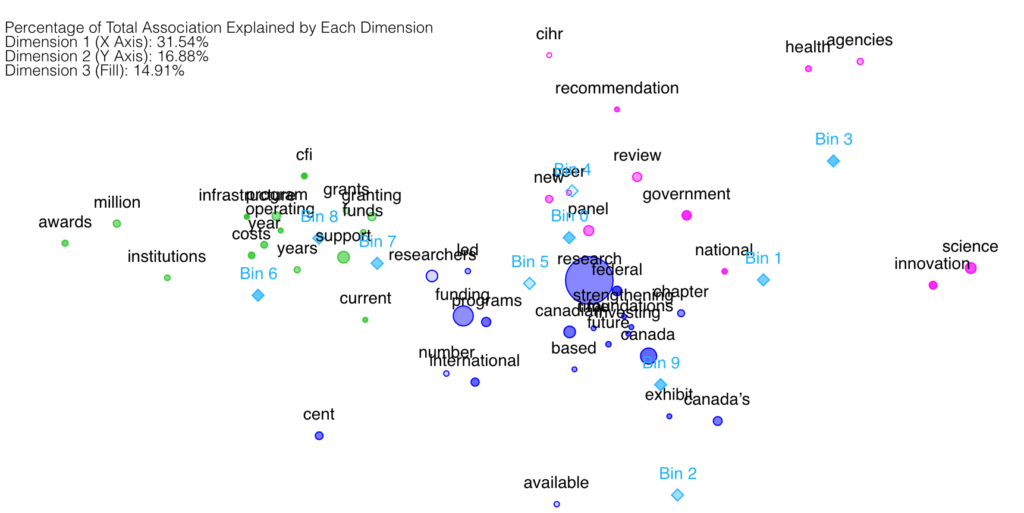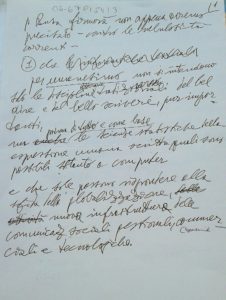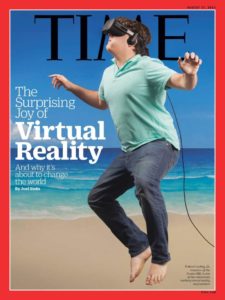
Reading Cartographies of Time by Rosenberg and Grafton, I was struck by one early visual presentation of time by Peter Poitiers. It has both the features of a family tree or genealogy and a timeline. It is spread over pages in a manuscript with text in between vertically flowing lines. there are little portraits of the people. What can we learn from the imaginative designs of past designers of time charts?
This English manuscript was created in the early thirteenth century soon after the death of its author, Peter of Poitiers, theologian and Chancellor of the University of Paris from 1193 to 1205. It is an early copy of his text, the Compendium historiae in genealogia Christi. Intended as a teaching aid, the work provides a visual genealogy of Christ comprised of portraits in roundels, accompanied by a text discussing the historical background of Christ’s lineage.
Source: Peter of Poitiers’ Historical genealogy of Christ at the Walters Art Museum.




